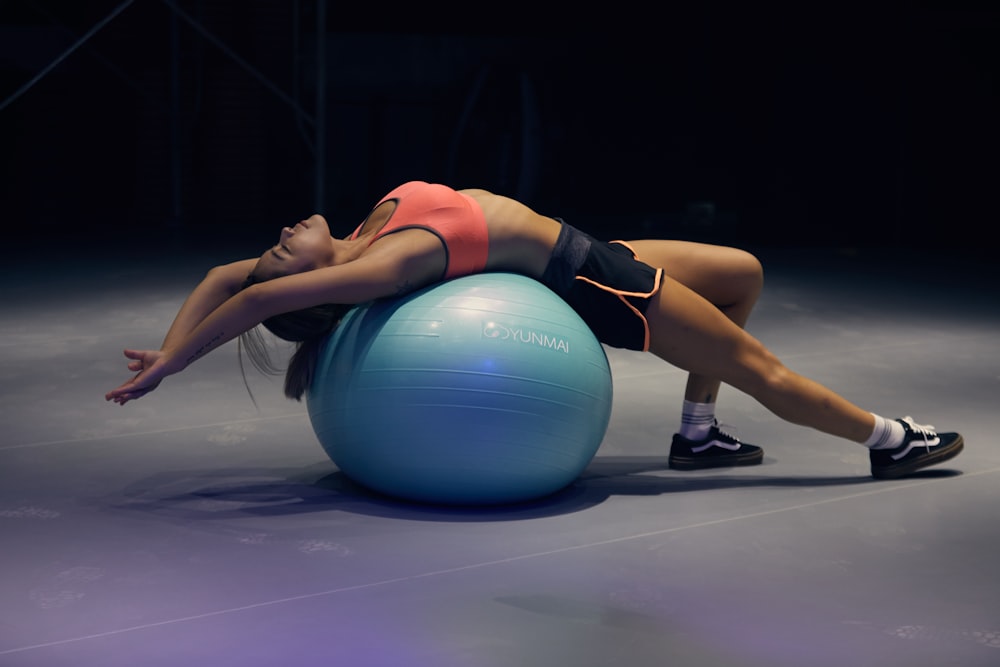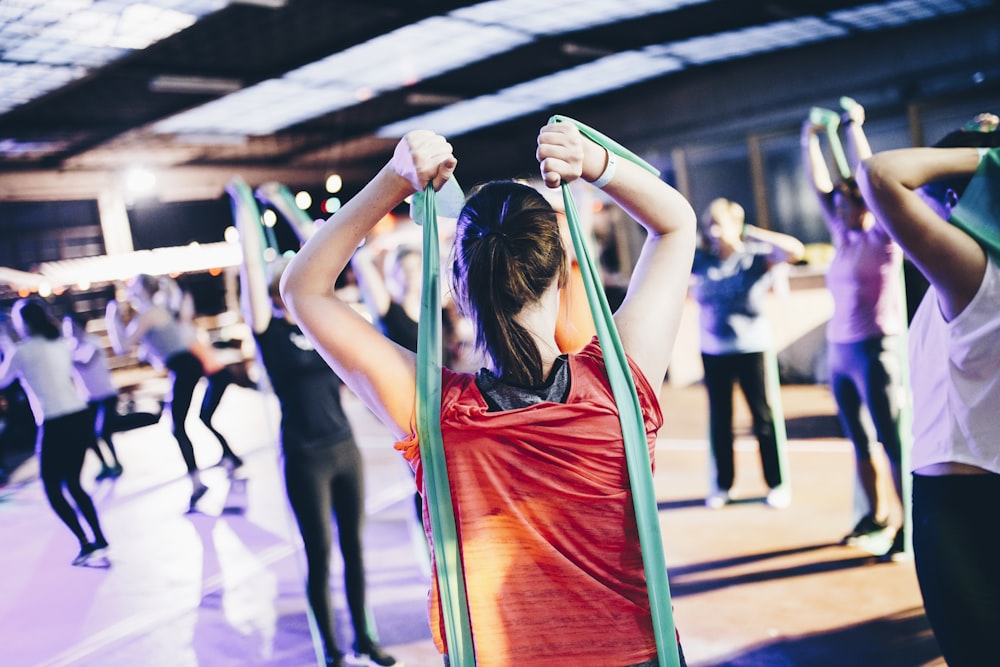12 Best ways for Muscle Recovery

Muscle Recovery:
Muscle recovery is a crucial part of any exercise routine, particularly after a tough workout. Exercise-induced muscle damage can result in muscle soreness, stiffness, and reduced muscle function, making it essential to focus on muscle recovery. In this blog, we’ll discuss 12 best ways to aid in muscle recovery.
1. Active Recovery Days
One of the most effective ways to reduce muscle soreness and speed up muscle recovery is through active recovery. This exercise recovery involves engaging in low-intensity exercise like walking, cycling, or swimming to increase blood flow to the muscles and promote healing.
2. Post-Workout Nutrition
What you consume after your workout plays a significant role in muscle recovery. Eating a balanced meal with protein, carbohydrates, and healthy fats can help replenish energy stores, promote muscle growth, and repair muscle tissue.
3. Stretching to improve delayed onset muscle soreness
Stretching helps to improve flexibility, reduce muscle tension and thus decrease muscle soreness, and enhance blood flow to the muscles. Incorporating stretching into your post-workout routine can aid in muscle recovery.
4. Foam Rolling
Foam rolling is a type of self-massage that helps to release muscle tension, reduce soreness and improve flexibility. By rolling over tight or sore muscles, foam rolling can promote blood flow and speed up muscle recovery.
5. Compression Garments
Wearing compression garments like sleeves, tights, or socks after a workout can enhance blood flow, reduce muscle soreness, and speed up muscle recovery.
6. Cold Water Immersion (ICE Bath)
Cold water immersion involves submerging your body in cold water after exercise. This technique can reduce inflammation, improve blood flow, and speed up muscle recovery.
7. Sleep

Sleep plays a critical role in muscle recovery. Getting a good night’s rest promotes muscle growth, reduces muscle soreness, and allows the body to repair muscle tissue.
8. Resistance Training
Resistance training or weight lifting can help to build muscle and promote muscle recovery. By increasing muscle mass, you can reduce muscle soreness and speed up muscle recovery.
9. Dietary Supplements
Supplements like protein powder, creatine, and BCAAs (branched-chain amino acids) can help support muscle growth and recovery. However, it’s essential to consult with a healthcare professional before taking any supplements.
10. Hydration
Staying hydrated is critical for muscle recovery. Adequate hydration can help to prevent muscle soreness, reduce inflammation, and promote muscle recovery.
11. Exercise Variations
Mixing up your workout routine by incorporating different exercises or variations can help reduce muscle soreness and improve muscle recovery.
12. Complete Rest
While active recovery and low-intensity exercise can aid in muscle recovery, sometimes complete rest is necessary for muscle groups. Resting can allow the body to repair muscle tissue and reduce muscle soreness.
In conclusion, muscle recovery is essential for muscle growth, reducing muscle soreness, and improving muscle function. Incorporating these 14 best ways into your workout routine can aid in muscle recovery and overall health.
1. What is Active Recovery

Active recovery refers to a type of low-intensity exercise that is performed after a strenuous workout, exercise session or competition to help the body recover and repair itself. The goal of active recovery is to improve circulation, increase blood flow to muscles, and reduce soreness and stiffness.
During a workout or competition, muscles are pushed to their limits, causing microscopic tears in the muscle fibers. This damage is necessary for muscle growth and improvement, but it can also lead to soreness and stiffness, making it difficult to perform at a high level in subsequent workouts or competitions. Active recovery can help speed up the repair process after muscle strains by promoting blood flow to the damaged muscle tissues, delivering nutrients and oxygen needed for recovery.
Active recovery activities can include low-intensity exercises such as walking, swimming, cycling, or yoga. These exercises are done at a much lower intensity than the initial workout, endurance exercise or competition, allowing the body to recover while still engaging in physical activity. They can also include techniques such as foam rolling or stretching, which help to release tension and increase flexibility.
One of the benefits of active recovery is that it can also help to prevent injury. When the body is pushed too hard without proper recovery, it can become more susceptible to injury. By engaging in active recovery, the body is able to recover more quickly and effectively, reducing the risk of injury and improving overall performance.
2. Best Post-Workout Nutrition
The right post-workout nutrition is crucial for optimizing recovery and achieving fitness goals. Here are some of the best post-workout nutrition tips to help you refuel and recover effectively:
- Protein: Consuming protein after a workout is essential to help repair and rebuild muscle tissue. Aim to consume 20-30 grams of protein within 30 minutes to an hour after your workout. Good sources of protein include eggs, chicken, fish, tofu, nuts, and protein shakes.
- Carbohydrates: Consuming carbohydrates after a workout can help replenish the glycogen stores that were depleted during exercise. Glycogen is the primary fuel source for your muscles during exercise, and replenishing it is essential for recovery. Good sources of carbohydrates include fruits, vegetables, whole grains, and sweet potatoes.
- Hydration: Rehydrating after exercise is crucial for replenishing fluids lost through sweat during the workout. Drink plenty of water, coconut water, or sports drinks to replace the fluids and electrolytes lost during exercise.
- Anti-Inflammatory Foods: Inflammation is a natural response to exercise, and consuming anti-inflammatory foods can help reduce inflammation and aid in recovery. Some examples of anti-inflammatory foods include turmeric, ginger, tart cherry juice, and omega-3 fatty acids found in fatty fish like salmon.
- Timing: Consuming the right nutrients at the right time is crucial for effective recovery. Try to consume your post-workout meal or snack within 30 minutes to an hour after your workout to optimize recovery.
In summary, the best post-workout nutrition strategy includes consuming a combination of protein and carbohydrates, staying hydrated, consuming anti-inflammatory foods, and timing your meals appropriately. With the right post-workout nutrition, you can maximize your recovery and achieve your fitness goals more effectively.
3. Benefit of Stretching

Stretching is a crucial aspect of physical fitness that offers a multitude of benefits. Here are some of the key benefits of stretching:
- Improved Flexibility: Stretching increases the range of motion of the muscles and joints. With regular stretching, you will notice that your body can move more easily and with greater ease.
- Reduced Risk of Injury: Tight muscles are more prone to injury. By stretching regularly, you can help to reduce the risk of injury, especially during physical activities such as running, weightlifting, or playing sports.
- Increased Blood Flow: Stretching promotes blood flow to the muscles, which helps to bring nutrients and oxygen to the muscles. This increased blood flow can also help to speed up recovery after exercise.
- Better Posture: Tight muscles can lead to poor posture, which can cause pain and discomfort. Stretching can help to improve posture by lengthening tight muscles, which can help to reduce pain and improve overall mobility.
- Stress Relief: Stretching can help to relieve stress and tension in the muscles, which can help to reduce overall stress levels in the body. This can be especially beneficial for those who sit for long periods of time or engage in other sedentary activities.
Overall, stretching is an important aspect of physical fitness that can provide a range of benefits, including improved flexibility, reduced risk of injury, increased blood flow, better posture, and stress relief. Incorporating stretching into your daily routine can help to improve your overall health and well-being.
4. Best Foam Rolling
Foam rolling is a form of self-myofascial release (SMR) that has become increasingly popular among athletes, fitness enthusiasts, and anyone looking to improve their mobility and flexibility. Foam rolling involves using a foam roller to apply pressure to various areas of the body to help release tension, increase blood flow, and improve range of motion. Here are some of the best foam rolling techniques for different areas of the body:
Calves:
Sit on the floor with your legs extended and place the foam roller under your calves. Use your hands to lift your hips off the ground and roll up and down your calves, focusing on any areas of tightness or discomfort.
Hamstrings:
Sit on the foam roller with your legs extended in front of you and your hands on the floor behind you. Roll back and forth over your hamstrings, starting at the top of your thighs and rolling down toward your knees.
Quadriceps:
Lie face down on the floor with the foam roller under your thighs. Use your arms to lift your upper body off the ground and roll up and down your quads, focusing on any areas of tightness or discomfort.
IT band:
Lie on your side with the foam roller under your outer thigh. Use your arms to support your upper body weight and roll up and down your outer thigh, focusing on any areas of tightness or discomfort.
Upper back:
Lie on your back with the foam roller under your shoulder blades. Use your feet to lift your hips off the ground and roll up and down your upper back, focusing on any areas of tightness or discomfort.
Glutes:
Sit on the foam roller with your legs bent and your feet on the ground. Cross your right ankle over your left knee and roll back and forth over your right glute, focusing on any areas of tightness or discomfort. Repeat on the other side.
Foam rolling can be an effective way to relieve muscle tension and soreness, but it’s important to use proper technique and to listen to your body. If you experience any pain or discomfort while foam rolling, stop immediately and consult a healthcare professional.
5. Benefit of Compression Garments
Compression garments are tight-fitting garments that apply pressure to different parts of the body, such as arms, legs, or torso. They have been gaining popularity among athletes and fitness enthusiasts for their numerous benefits. Here are some of the benefits of compression garments:
Improved circulation:
Compression garments help to improve blood circulation by applying pressure to the body’s tissues, leading to increased blood flow. This increased circulation helps to deliver more oxygen and nutrients to the muscles, which can improve performance and reduce the risk of injury.
Reduced muscle soreness:
Wearing compression garments after a workout can help reduce muscle soreness and stiffness. The pressure applied by the garments helps to flush out lactic acid and other waste products that build up in the muscles during an intense exercise itself.
Faster recovery:
Compression garments have been shown to speed up recovery time after a workout. The increased circulation helps to remove metabolic waste products from the muscles, reducing inflammation and promoting healing.
Improved performance:
Compression garments have been shown to improve performance in athletes by reducing fatigue during muscle contraction and improving muscle efficiency. This is due to the increased blood flow and reduced muscle vibration that comes with wearing the garments.
Injury prevention:
Compression garments can also help prevent injuries by providing support to the muscles and reducing the risk of muscle strain or sprain. They can also help with blood pressure to prevent the formation of blood clots, which can be a risk during prolonged periods of inactivity.
Overall, compression garments can be a valuable addition to any fitness routine, offering benefits for both performance and recovery. However, it’s important to choose the right type of compression garment and ensure that it fits properly to get the most benefit. It’s also important to consult a doctor if you have any concerns about using compression garments, especially if you have underlying health conditions such as circulatory problems or blood clots.
6. Benefits of Cold Water Immersion (ICE Bath)
Cold water immersion, also known as an ice bath, is a post-workout recovery technique that involves submerging the body in cold water for a short period of time. While the idea of immersing yourself in freezing cold water may not sound appealing, there are several benefits to this recovery technique that make it worthwhile.
Reduces inflammation:
One of the main benefits of cold water immersion is its ability to reduce inflammation. When you exercise, your muscles can become inflamed, which can lead to soreness and stiffness. Cold water immersion helps to reduce this inflammation by constricting blood vessels and decreasing the flow of blood to the affected area. This reduces swelling and can help to speed up the recovery process.
Reduces muscle soreness:
Cold water immersion has been shown to be effective in reducing muscle soreness after exercise. By reducing inflammation, the muscles are less likely to become sore, which means you’ll be able to recover faster and get back to your workouts sooner.
Improves circulation:
Cold water immersion can also improve circulation throughout the body. When you immerse yourself in cold water, the blood vessels constrict, forcing the blood to flow at a faster rate. This increased circulation can help to remove waste products from the muscles, such as lactic acid, which can help to speed up the recovery process.
Reduces stress and anxiety:
Immersing yourself in cold water can also have a calming effect on the body. Cold water immersion has been shown to reduce levels of the stress hormone cortisol, which can help to reduce stress and anxiety.
Boosts immune system:
Cold water immersion can also boost the immune system. The cold water stimulates the production of white blood cells, which are responsible for fighting off infections and diseases. This can help to keep you healthy and reduce the risk of getting sick.
Enhances mental focus:
Finally, cold water immersion can also enhance mental focus. The shock of the cold water can help to increase alertness and improve cognitive function, which can help you to stay focused and productive throughout the day.
Overall, while the idea of an ice bath may not be the most pleasant, the benefits of cold water immersion cannot be ignored. It can help to reduce inflammation, muscle soreness, and stress, while also boosting circulation, the immune and central nervous system both, and mental focus. So, if you’re looking for a way to enhance your post-workout recovery, cold water immersion may be worth considering. You can read our in depth review of the best Ice Baths here.
7. Why is Sleep so important to Recovery
Sleep is important for recovery because it is the time when the body repairs and restores itself. During sleep, the body releases growth hormone, which is essential for tissue repair and muscle growth. It is also the time when the immune system strengthens and the brain consolidates memories and learning. Without adequate sleep, the body cannot fully recover from the physical and mental stresses of daily life, which can lead to fatigue, reduced performance, and increased risk of injury and illness. Therefore, prioritizing sleep is essential for optimal recovery and overall health.
8. Resistance Training for Recovery

Resistance training, also known as weightlifting or strength training, can be a valuable tool in the recovery process. While many people associate resistance training with building muscle and strength, it can also aid in recovery by promoting circulation, improving flexibility, and reducing inflammation.
Resistance training stimulates the production of growth hormone, which plays a crucial role in tissue repair and recovery. It also helps to increase blood flow, delivering essential nutrients and oxygen to the muscles and other tissues.
Furthermore, resistance training can improve flexibility and mobility, which is important for preventing injury and maintaining good posture. It can also help to reduce inflammation by activating the immune system, which aids in the removal of damaged tissue and promotes healing. Read our full article of the best home gyms here.
9. Best Dietary Supplements for Recovery

There are several dietary supplements that are commonly used to aid in recovery from physical activity. Here are some of the best options:
Protein Powder:
Protein is essential for the muscle repair process and recovery. Protein powders are a convenient and easy way to increase your protein intake. Whey protein is the most common form and is easily absorbed by the body.
Branched-Chain Amino Acids (BCAAs):
BCAAs are essential amino acids that the body cannot produce on its own. They are known to help reduce muscle soreness and improve muscle recovery after exercise.
Creatine:
Creatine is a popular supplement among athletes and bodybuilders. It has been shown to help increase muscle strength and size, as well as aid in recovery between workouts.
Omega-3 Fatty Acids:
Omega-3s are anti-inflammatory and can help reduce inflammation in the body. This can be especially helpful for reducing muscle soreness and aiding in recovery.
Vitamin D:
Vitamin D is important for bone health and muscle function. It can also help reduce inflammation and improve recovery.
Magnesium:
Magnesium is involved in muscle and nerve function and can help reduce muscle cramps and soreness. It may also improve sleep quality, which is important for recovery.
It’s important to remember that supplements should not replace a healthy diet and lifestyle. Always consult with a healthcare professional before starting any new supplement regimen.
10. Hydration
Hydration is crucial for muscle recovery because muscles are composed of approximately 70% water, and dehydration can lead to muscle damage and slower recovery times. When you exercise, your body loses water through sweating and breathing, which can result in a decrease in muscle strength and endurance, as well as an increase in muscle soreness and fatigue.
Proper hydration helps to facilitate the delivery of nutrients and oxygen to the muscles, which is essential for repairing damaged tissue and promoting muscle growth. It also helps to flush out metabolic waste products, such as lactic acid, which can contribute to muscle soreness and fatigue.
In addition, staying hydrated helps to regulate your body temperature and prevent overheating, which can also have a negative impact on muscle recovery. It is recommended to drink water before, during, and after exercise to ensure proper hydration levels and support optimal muscle recovery.
11. Exercise Variations
Exercise variation is important for several reasons. First, it prevents boredom and monotony, which can lead to a lack of motivation and adherence to a workout program. By changing up exercises, you can keep your workouts fresh and challenging, making it more enjoyable and sustainable in the long term.
Second, exercise variation helps prevent overuse injuries that can occur from repeatedly performing the same movements. By incorporating a variety of exercises that work the same muscle groups in different ways, you can avoid placing too much stress on a specific joint or muscle.
Third, exercise variation can help prevent plateaus in strength and performance. When you do the same exercises over and over again, your body becomes efficient at performing them, and progress may slow down. By changing up your exercises, you can challenge your body in new ways and stimulate muscle growth and adaptation.
Finally, exercise variation can provide a more well-rounded approach to fitness. By incorporating different types of exercises such as cardio, strength, and mobility work, you can improve overall fitness and prevent muscle imbalances.
12. Complete Rest
Complete rest is important for muscle recovery because it allows the body to repair and rebuild damaged muscle tissue. During exercise, small tears occur in the muscle fibers, which trigger a response from the body to repair and strengthen the muscles. This process is known as muscle hypertrophy and is necessary for building muscle mass and strength.
Rest is crucial during the recovery phase because it allows the body to allocate resources towards muscle repair and growth. Adequate rest also prevents overuse injuries, which can occur when the body is not given enough time to recover between exercise sessions. Without enough rest, muscles may become fatigued and unable to perform optimally, leading to a decrease in performance and an increased risk of injury.
Moreover, during rest, the body’s hormonal balance is restored, which is important for muscle growth and recovery. Hormones such as testosterone and growth hormone play a crucial role in muscle repair and growth, and sleep is a key factor in the release of these hormones.
Conclusion:
It is not realistic to do all of these things all at once. What you can do is start with one and work to develop it into your exercise routine. Start including your recovery techniques into your workout plan. Just like if you are trying to work towards a high squat, you will start with lower weight until you can reach your goal. Start with the basics and work up to your recovery goal. I hope this was helpful information for you and I hope you start incorporating recovery into your healthy lifestyle.

